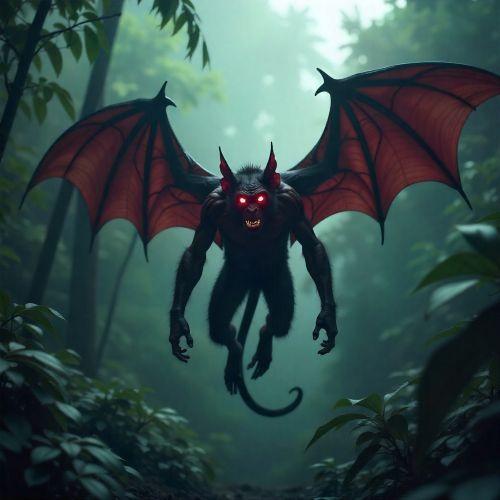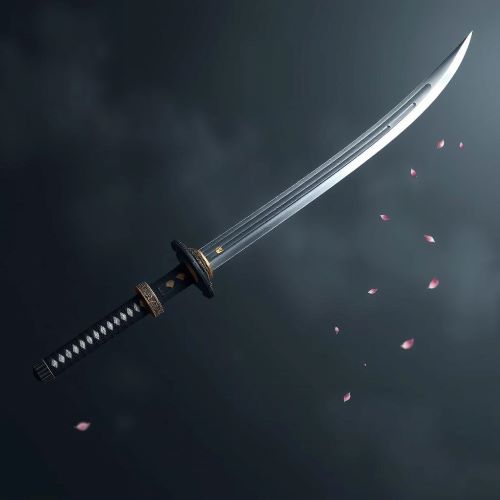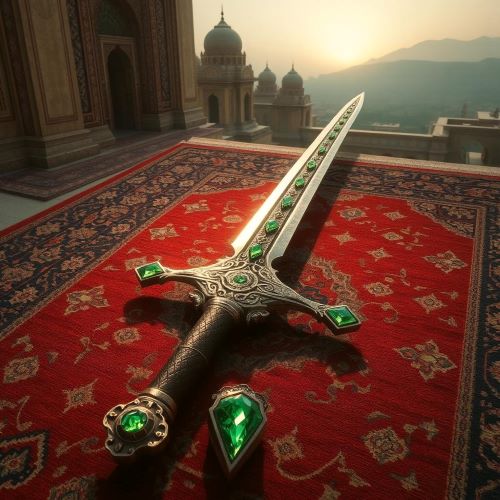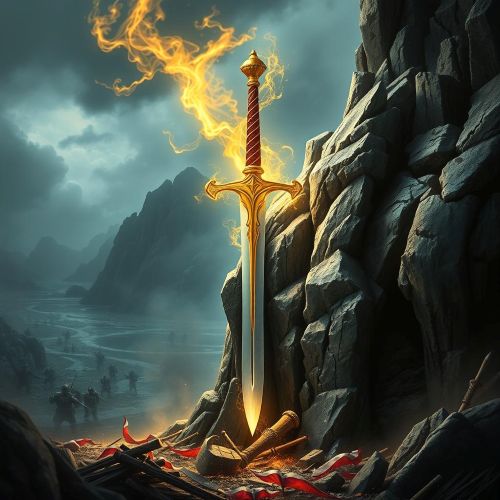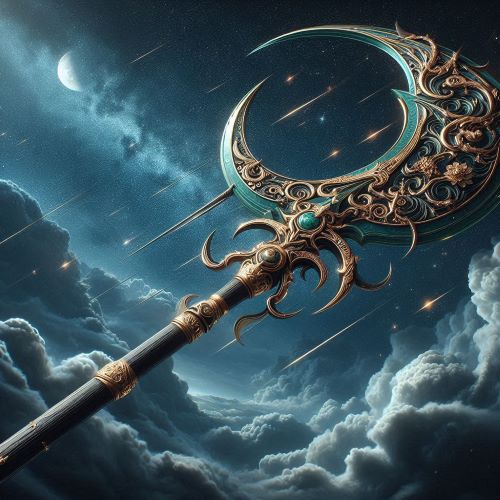Chandrahas : The Divine Crescent Sword of Ravana
Chandrahas
Introduction
In Indian mythology, divine weapons are more than tools of war—they are embodiments of cosmic law, spiritual merit, and the balance between devotion and ego. Among these powerful astras, Chandrahas holds a special place. This celestial sword, known for its crescent-shaped blade and luminous aura, is closely tied to the complex legend of Ravana, the king of Lanka. Its origins, purpose, and role in the Ramayana reflect the intertwined themes of divine favor, moral responsibility, and destiny. As a weapon born of Shiva’s grace and entrusted to one of mythology’s most enigmatic rulers, Chandrahas stands as a reminder of how power must align with dharma, not pride.
Origins
The story of Chandrahas begins in the Uttara Kanda of the Ramayana, where Ravana’s ambition once pushed him to attempt the impossible—lifting Mount Kailash, the sacred abode of Shiva and Parvati. Shiva effortlessly subdued him by pressing the mountain down with his toe, trapping Ravana beneath its weight. Instead of despairing, Ravana channeled his agony into devotion, singing hymns of repentance and praise for a thousand years. His perseverance and sincerity moved Shiva, who not only released him but also granted him a celestial weapon: Chandrahas, literally “the laughter of the moon.”
The blade’s crescent form inspired its name, symbolizing both serenity and razor-sharp brilliance. Texts describe it as forged from divine elements, incapable of decay, and glowing with an otherworldly sheen. It was also governed by a cosmic rule—Chandrahas would remain with its wielder only as long as he acted according to righteousness. If used unjustly, it was destined to return to Shiva.
Think you know your myths and legends? Dive into the world of ancient stories and test your knowledge with our engaging quizzes on Mythlok!
Powers
Chandrahas is characterized as a sword infused with Shiva’s own energy, making it one of the most potent weapons in Ravana’s arsenal. Ancient descriptions emphasize its unbreakable form, sharpened edge, and moonlike radiance that gave it an unmistakable presence on the battlefield. Unlike certain weapons that required chants or rituals, Chandrahas responded to the emotional and moral state of its wielder. This mystical feature meant the sword acted as both a weapon and a moral compass—its blessings amplified when used with honor, and its power diminished when misused.
Legends portray it as capable of cutting through even the strongest celestial beings, reflecting both its physical and spiritual potency. Its glow was said to unsettle enemies and empower the wielder with heightened confidence. Though Ravana wielded many divine arms, Chandrahas remained the clearest sign of Shiva’s direct approval of his devotion and strength.
Owners/Users
Chandrahas was primarily associated with Ravana, who received it directly from Shiva. Though a Rakshasa king, Ravana’s devotion, intellect, and mastery of arts made him worthy of divine blessings. The sword became a symbol of his authority, reinforcing his identity as a ruler supported by cosmic powers and feared across all realms.
In a few traditional retellings, Ravana is said to have allowed his son Meghanada (Indrajit) to wield the sword in specific battles, though mainstream versions rarely mention other bearers. Folk stories from some regions of India describe variations where the sword was later lost after Ravana’s fall, but these remain culturally localized and are not part of the primary Ramayana canon.
Some medieval legends link a symbolic Chandrahas to Chhatrapati Shivaji Maharaj, portraying him as a divinely guided warrior blessed by the Goddess Durga. However, this is a later cultural association and not tied to the original mythic weapon.
Instances used
One of the most dramatic appearances of Chandrahas occurs during the abduction of Sita, when the noble vulture Jatayu challenges Ravana. In the fierce encounter, Ravana uses Chandrahas to sever Jatayu’s wings, leaving the guardian mortally wounded. This moment not only showcases the sword’s lethal precision but also sets into motion Rama’s path of retribution.
Earlier in his life, Ravana used the sword during his battle with his half-brother Kubera, defeating him and claiming the celestial Pushpaka Vimana. The sword is also described in episodes where Ravana uses it to intimidate gods, sages, and rival kings, though he rarely used it without purpose. Its presence emphasized power and authority more than unnecessary violence.
During the Ramayana war, Chandrahas appears again when Ravana confronts Rama and Lakshmana. Though the sword’s divine force was immense, it could not overcome Rama’s own divine identity, reinforcing the epic’s central message: even the most powerful weapons yield before dharma and the will of the cosmic order.
Source
Amarchitrakatha. (2022, July 5). Divine Weapons from Mythology. https://www.amarchitrakatha.com/mythologies/divine-weapons-from-mythology/
Wisdom Library. (2025, October 15). Candrahasa, Candrahāsa, Camdrahasa, Candra-hasa. https://www.wisdomlib.org/definition/candrahasa
Wikipedia contributors. (2016, January 14). Chandrahasa (Hinduism). Wikipedia. https://en.wikipedia.org/wiki/Chandrahasa
Vedic Tribe. (2020, December 27). Ancient Divine Weapons as Mentioned in Hindu Puranas. https://vedictribe.com/dharma/hinduism/ancient-divine-weapons-as-mentioned-in-hindu-puranas/
Sanskriti Magazine. (2016, June 11). The Divine Weapons of the Puranas. https://www.sanskritimagazine.com/divine-weapons-puranas/
Academia.edu. (2016, August 28). The Magic Weapon – Its Appearance, Acquisition and Application as Described in Texts of Hindu Tradition.
Frequently Asked Questions
What is Chandrahas in Indian mythology?
Chandrahas is the divine crescent-shaped sword gifted by Lord Shiva to Ravana after his intense penance.
Why did Shiva give Ravana the Chandrahas sword?
Shiva gifted the sword as a reward for Ravana’s devotion and repentance after attempting to lift Mount Kailash.
What are the powers of Chandrahas?
Chandrahas is an indestructible celestial sword with moonlike radiance, immense cutting power, and divine energy linked to Shiva’s blessings.
Who used Chandrahas besides Ravana?
Primary sources mention only Ravana as its wielder, though some traditions say Meghanada briefly used it.
How was Chandrahas used in the Ramayana?
Ravana used it during major confrontations, including his attack on Jatayu and battles during the war against Rama.



